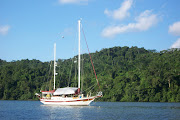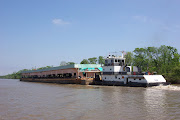BE WEATHER-WISE
❐ Check local weather conditions before departure
• Play it safe and get off the water if you notice darkening clouds, rough, changing winds or sudden temperature drops
FOLLOW A PRE-DEPARTURE CHECKLIST
❐ Boating safety rules
❐ Proper equipment
• Ensure you'll be ready for any on-water emergency
USE COMMON SENSE
❐ Operate at a safe speed, especially on crowded waters
❐ Be alert
❐ Steer clear of large vessels
❐ Pay attention to buoys and other navigational aids
DESIGNATE AN ASSISTANT SKIPPER
❐ Ensure another person on board can take the helm and return to shore should you become incapacitated
DEVELOP A FLOAT PLAN
❐ Always let someone on shore know your boating plans.
Include:
• Name, address, and phone number of trip leader and passengers
• Boat type and registration
• Trip itinerary
• Type of communication and signal equipment on board
LEARN TO SWIM
❐ Check with local pools, or organizations such as the YMCA and American Red Cross for lessons
WEAR LIFEJACKETS
❐ Fit and assign a lifejacket to each passenger prior to launch
TAKE A BOATING COURSE
• Boating education requirements vary by state; regardless of your state's regulations, it's smart to be educated
SCHEDULE A FREE VESSEL SAFETY CHECK
• The U.S. Coast Guard and U.S. Power Squadrons offer free vessel safety checks to verify presence and condition of safety equipment, check out your boat and make safety recommendations. Find an examiner: http://www.safetyseal.net/GetVSC/
SAFETY RESOURCES
• Boat-ed.com: Official boating safety courses and online tests for your boat license
• US Power Squadrons (usps.org) and Coast Guard Auxiliaries (cgaux.org): Free vessel safety checks, boater education and safe boating tips
• Boater101.com: Water and boating safety instruction
Content courtesy of BoatSafe.com
Special Notice
The Coast Guard has recently released its first boating safety App. Features of the app include: state boating information; a safety equipment checklist; free boating safety check requests; navigation rules; float plans; and calling features to report pollution or suspicious activity. When location services are enabled, users can receive the latest weather reports from the closest National Oceanic and Atmospheric Administration weather buoys as well as report the location of a hazard on the water. The app also features an Emergency Assistance button which, with locations services enabled, will call the closest Coast Guard command center. http://www.uscg.mil/mobile/









